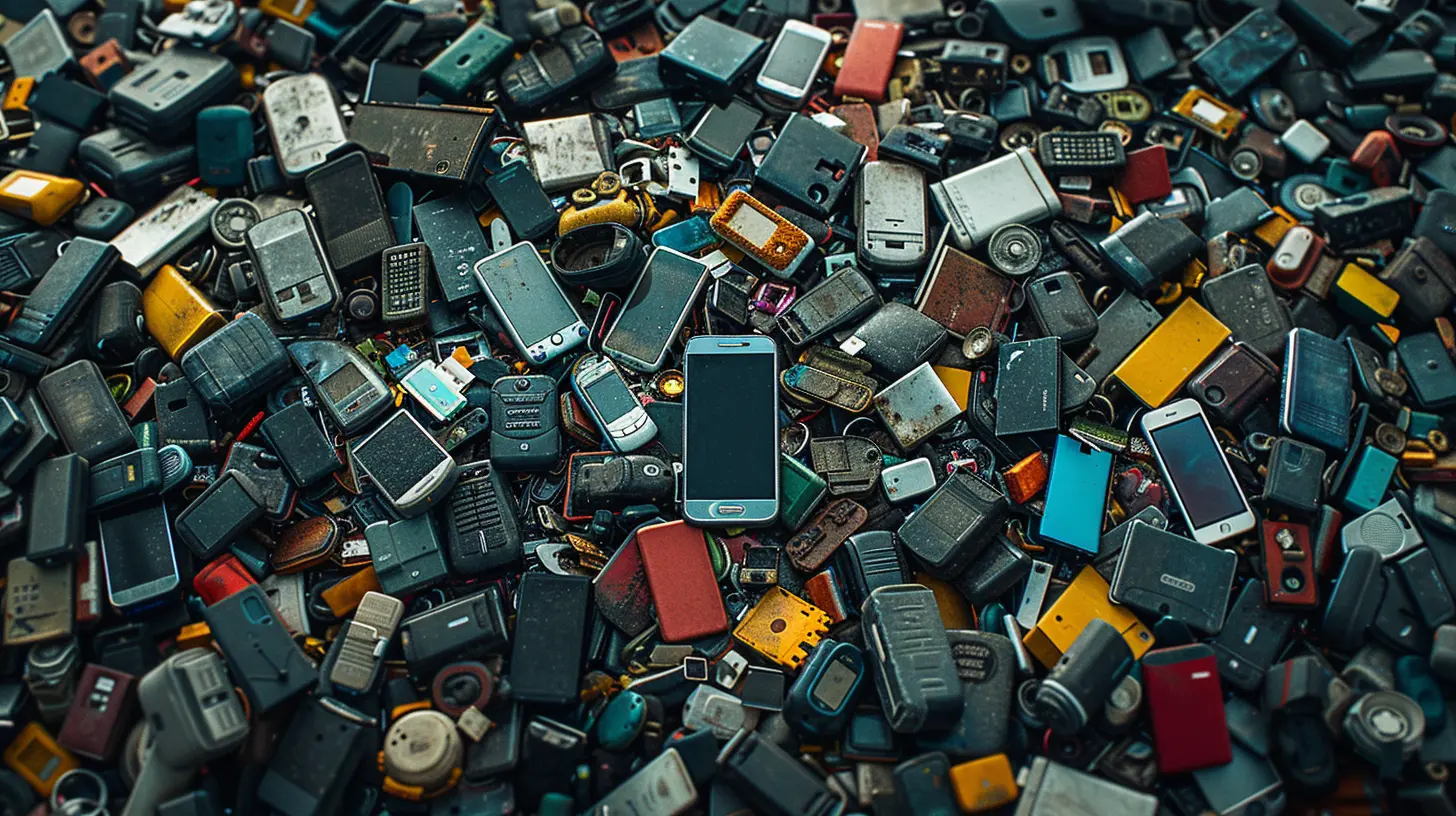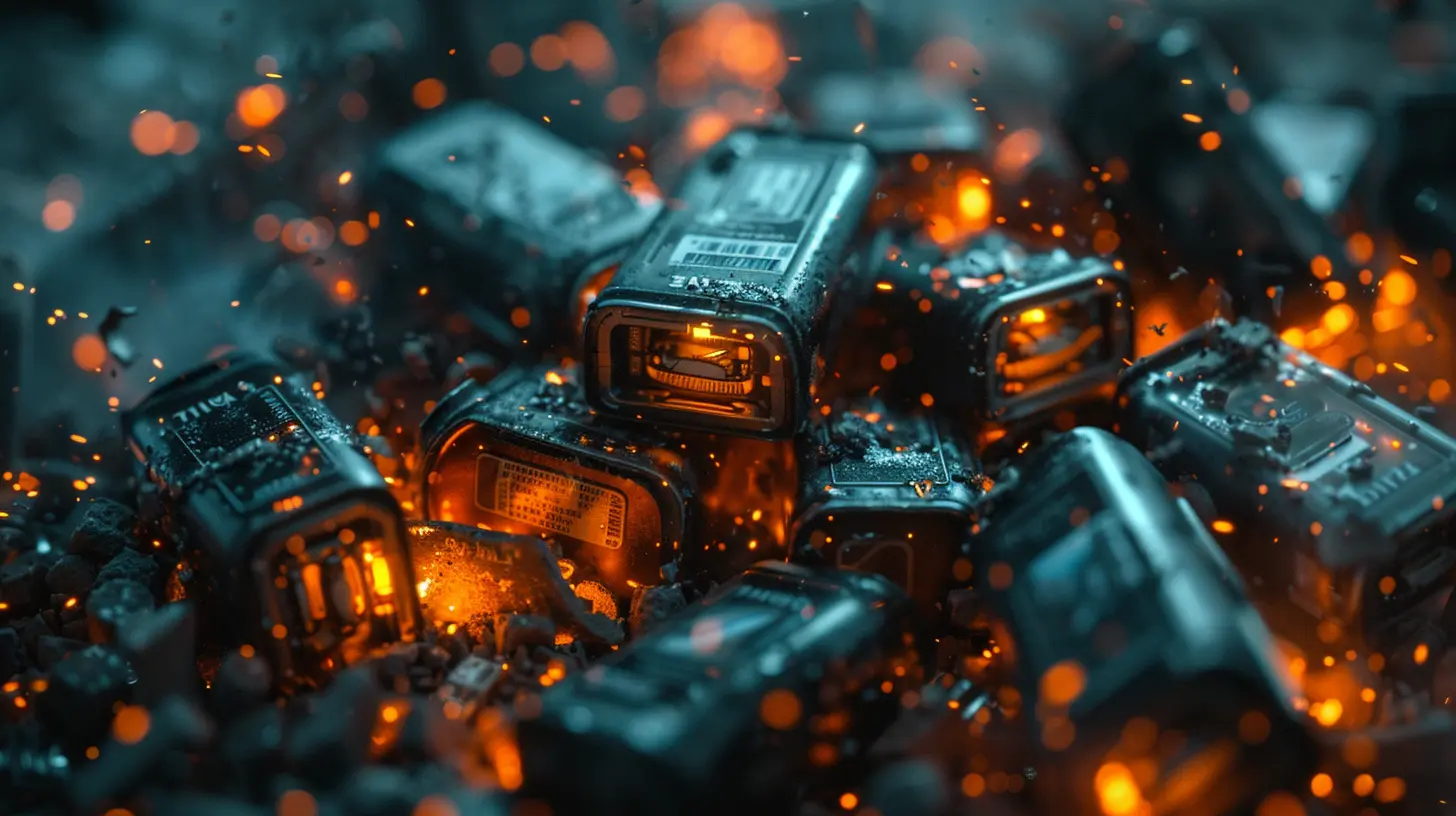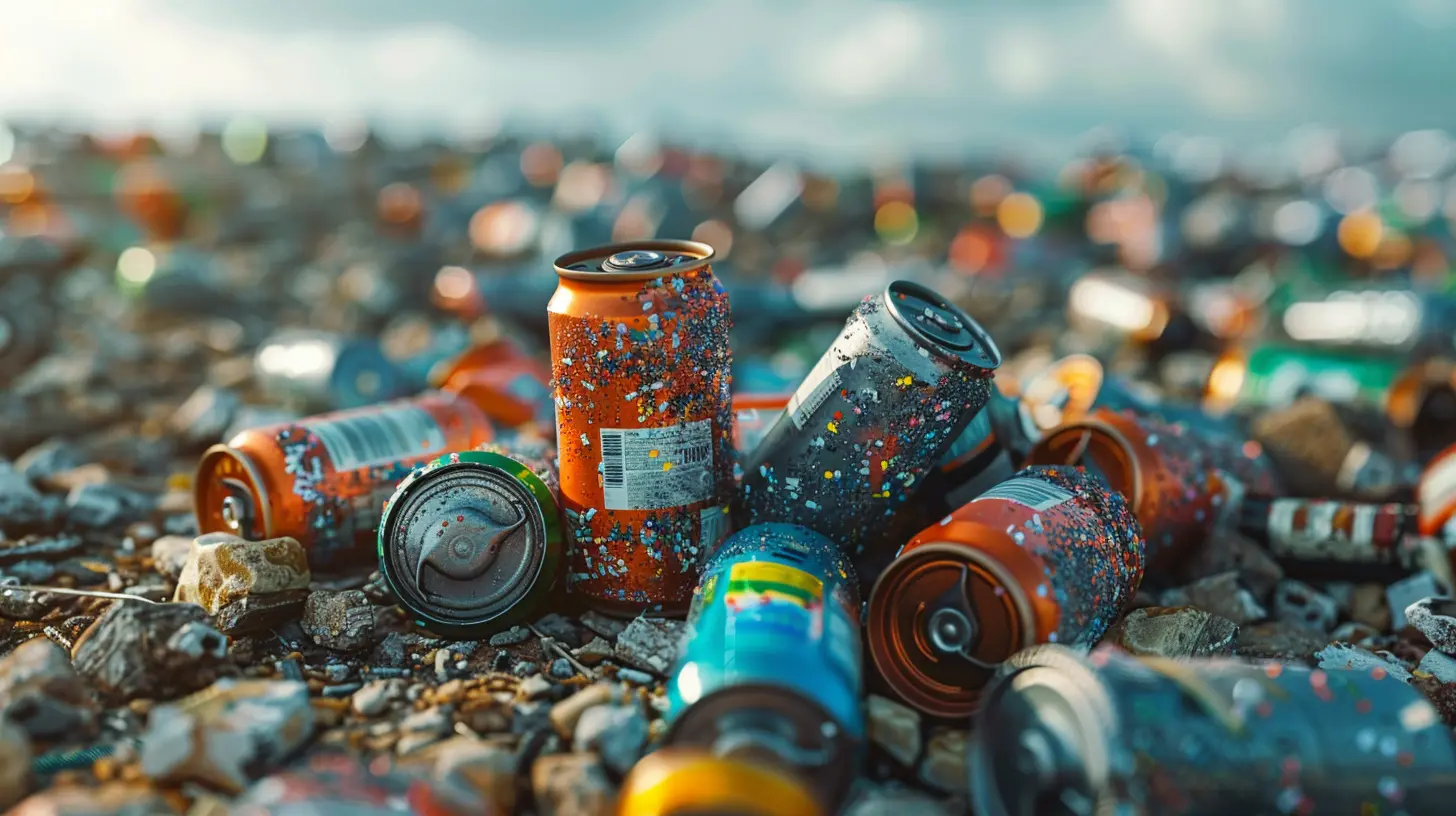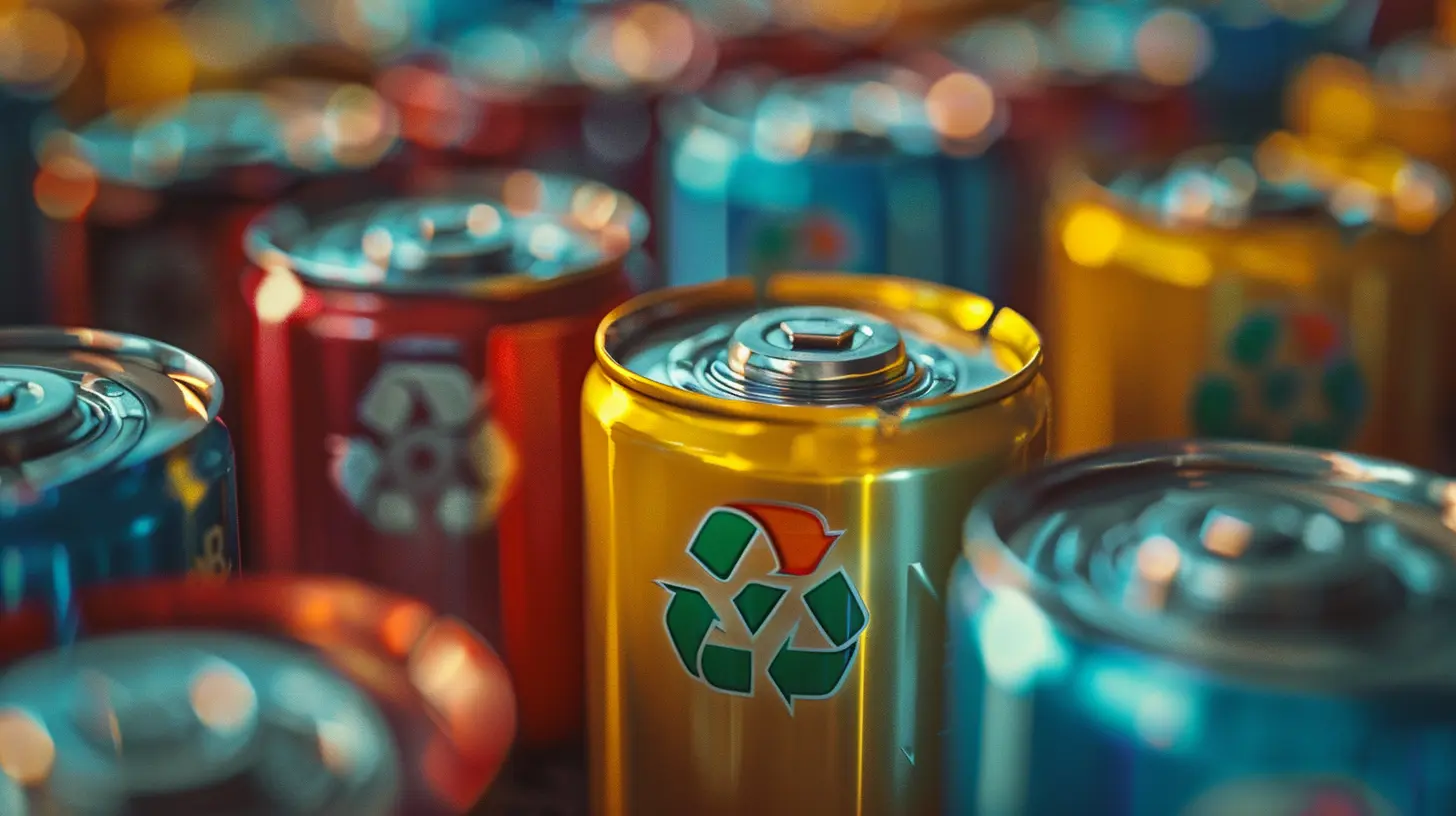Battery Recycling: Solving the E-Waste Crisis
20 October 2025
In today’s digital world, we’re constantly surrounded by electronic gadgets—smartphones, laptops, tablets, electric vehicles, and more. As exciting as these innovations are, they come with a hidden cost: batteries. You know, those power-packed little guys that keep your devices running? Yeah, they’re more problematic than we think when it comes time to dispose of them. Enter battery recycling—our unsung hero in the battle against the growing e-waste crisis.
But what exactly is battery recycling, and why should you care? Stick around, and I’ll break it down for you. Spoiler alert: it’s way more important than you might think!

What’s the Deal with E-Waste?
Before we dive into battery recycling, let’s talk about the bigger picture: e-waste (short for electronic waste). E-waste is basically any electronic device that’s no longer wanted or useful. Think old cellphones, broken laptops, outdated gaming consoles—anything that runs on electricity.Here’s the alarming part: we’re producing millions of tons of e-waste every year globally. According to the Global E-Waste Monitor, the world generated around 53.6 million metric tons of e-waste in 2019, and that number is climbing fast. As you can imagine, a huge chunk of this waste includes batteries, especially from devices that are tossed aside when they stop working or when we switch to newer models.
Why Should We Worry About E-Waste?
You might be wondering, "Okay, so we’ve got a bunch of old gadgets lying around—big deal, right?" Actually, it is a big deal. E-waste contains a cocktail of toxic materials like lead, mercury, and cadmium, which can leak into our soil, water, and air if not disposed of properly. Batteries, in particular, are notorious for being hazardous when they end up in landfills. Ever heard of a landfill fire caused by a battery? Yep, it happens.And that’s not all. The valuable materials inside e-waste, like copper, aluminum, and rare earth metals, can be recovered and reused if properly recycled. So, throwing out old electronics isn't just wasteful, it’s like tossing cash into the trash.

The Role of Batteries in the E-Waste Problem
Batteries are a massive chunk of the e-waste problem, and the reason is simple: everything we use nowadays seems to have a battery in it. From your smartwatch to your electric toothbrush, batteries are everywhere. And these batteries come in all shapes and sizes—lithium-ion, nickel-metal hydride, lead-acid, and so on.Why Are Batteries So Dangerous?
Batteries aren’t just harmless lumps of metal. Far from it! Many batteries are packed with hazardous chemicals. Lithium-ion batteries, for example, are the most common in modern devices, but they’re also infamous for being volatile. They can overheat, catch fire, or even explode if damaged or improperly disposed of.Lead-acid batteries, commonly found in cars, contain lead and sulfuric acid (yeah, not fun stuff). If these batteries end up in a landfill, they can leach harmful chemicals into the environment, contaminating the soil and water.
In short, batteries are more than just an e-waste problem—they’re an environmental hazard waiting to happen.

What is Battery Recycling?
Now that we’ve established how big of a problem batteries are, let’s get to the solution: battery recycling. Put simply, battery recycling is the process of converting old, used batteries into reusable materials. It’s like giving your worn-out batteries a second chance at life. Sounds pretty cool, right?How Does Battery Recycling Work?
It’s not magic, but it’s close! The battery recycling process typically involves several steps:1. Collection: First, the batteries need to be collected. This can happen through designated drop-off points, recycling programs, or even businesses that accept old electronics.
2. Sorting: Once collected, the batteries are sorted by type (lithium-ion, lead-acid, etc.) because different types need different recycling processes.
3. Breaking Down: The batteries are then broken down into their basic components. For example, in lithium-ion batteries, these components might include lithium, cobalt, nickel, and graphite.
4. Extraction: The valuable materials inside are extracted and separated for reuse. This can involve chemical processing, melting, or even mechanical crushing.
5. Reuse: Finally, the recovered materials are sold or reused in the production of new batteries or other products. It’s a full-circle process that helps reduce the need for raw materials and cuts down on waste.
The Benefits of Battery Recycling
Battery recycling has a ton of benefits, not just for the planet but also for the economy. Here’s why it’s such a game-changer:- Reduces Toxic Waste: Recycling keeps hazardous materials out of landfills, preventing them from leaching into the environment.
- Conserves Resources: By recovering valuable metals from old batteries, we reduce the need to mine new materials, which is both costly and environmentally destructive.
- Energy Savings: Recycling batteries takes less energy than mining and processing raw materials, helping to lower the overall carbon footprint.
- Economic Opportunities: The battery recycling industry creates jobs and contributes to the circular economy by turning waste into valuable resources.

Challenges Facing Battery Recycling
Sounds like a no-brainer, right? But, like most good things, battery recycling isn’t without its challenges. Let’s take a look at some of the hurdles we need to overcome to make it more widespread.1. Lack of Awareness
One of the biggest issues is simply that many people don’t know how or where to recycle their batteries. The average person might not realize that tossing an old battery in the trash is harmful. And even if they do, finding a place to recycle it isn’t always easy or convenient.2. Complex Recycling Process
Different types of batteries require different recycling methods, which complicates things. For example, recycling a lead-acid battery is a lot different from recycling a lithium-ion battery. This means recycling facilities need to be specialized, which can be costly and time-consuming.3. Economic Viability
Battery recycling is expensive, and the recovered materials often aren’t enough to offset the costs. This can make it less attractive for businesses to invest in large-scale battery recycling operations. However, as the demand for materials like lithium and cobalt increases (especially with the rise of electric vehicles), the economics may shift in favor of recycling.4. Safety Concerns
Remember how I mentioned that some batteries can be volatile? Yeah, that’s a big concern when it comes to recycling. Lithium-ion batteries, for example, can catch fire or explode if they’re damaged during the recycling process. This means recyclers need to be extra cautious, which adds another layer of complexity.The Future of Battery Recycling
Despite these challenges, the future of battery recycling looks promising. With the rise of electric vehicles and renewable energy storage, demand for batteries is skyrocketing. This means the need for efficient, large-scale battery recycling is more urgent than ever.Tech companies, governments, and startups are already working on innovative solutions to improve the recycling process. For instance, some companies are developing new methods to extract valuable materials from batteries more efficiently. Others are creating battery designs that are easier to recycle from the get-go.
Government Regulations and Incentives
Governments around the world are also stepping up to promote battery recycling. In the European Union, for example, strict regulations require companies to take responsibility for the disposal and recycling of the batteries they produce. The U.S., Canada, and other countries are also introducing regulations and incentives to encourage battery recycling.Technology and Innovation
As technology continues to evolve, so too will our ability to recycle batteries more efficiently. Artificial intelligence and robotics are already being used to sort and process batteries, making the whole recycling process faster and safer. Meanwhile, researchers are working on developing solid-state batteries that are less harmful and easier to recycle than today’s lithium-ion batteries.
What Can You Do?
So, now that you’re an expert on battery recycling, what can you do to help? It’s actually pretty simple:- Recycle Your Batteries: Don’t toss your old batteries in the trash! Look for local recycling programs or drop-off points where you can safely dispose of them.
- Support Companies That Recycle: When buying new gadgets, consider supporting companies that have recycling programs or that use recycled materials in their products.
- Spread the Word: The more people know about battery recycling, the better! Share your knowledge with friends and family so they can make smarter choices too.
Conclusion
Battery recycling is a crucial piece of the puzzle when it comes to solving the e-waste crisis. While there are challenges to overcome, the benefits far outweigh the obstacles. By recycling old batteries, we can reduce toxic waste, conserve valuable resources, and create a cleaner, more sustainable future. So next time you’re about to toss an old battery, think twice—because recycling isn’t just the responsible thing to do, it’s the smart thing to do.all images in this post were generated using AI tools
Category:
Battery TechnologyAuthor:

Vincent Hubbard
Discussion
rate this article
1 comments
Grant Sanchez
Effective battery recycling is crucial for mitigating e-waste, conserving resources, and promoting environmental sustainability in the tech industry.
October 27, 2025 at 3:27 AM

Vincent Hubbard
Thank you for highlighting the importance of battery recycling! It’s indeed essential for reducing e-waste and fostering sustainability in the tech industry.


